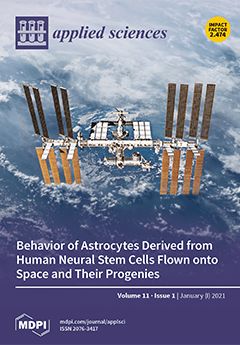This study was designed to evaluate, for the first time, the antioxidant and antimicrobial activities of
Nepeta ×
faassenii essential oil (NEO). Twenty-six compounds were identified by gas chromatography and mass spectrometry analysis, of which 4a alpha,7alpha,7a alpha-nepetalactone (34.12%), elemol (23.23%), spiro(5,6)dodecane (13.73%),
[...] Read more.
This study was designed to evaluate, for the first time, the antioxidant and antimicrobial activities of
Nepeta ×
faassenii essential oil (NEO). Twenty-six compounds were identified by gas chromatography and mass spectrometry analysis, of which 4a alpha,7alpha,7a alpha-nepetalactone (34.12%), elemol (23.23%), spiro(5,6)dodecane (13.73%), and 3,4 alpha-dihydro-4a alpha, 7 alpha, 7a alpha-nepetalactone (7.93%) were the major compounds. The NEO exhibited broad-spectrum antibacterial effects, and possesses potent antifungal activity on
Candida albicans and
Candida parapsilosis. NEO’s antioxidant activity was evaluated against cold-pressed sunflowers oil by peroxide, thiobarbituric acid, 1,1-diphenyl- 2-picrylhydrazyl radical, and β-carotene/linoleic acid bleaching methods. The NEO showed strong scavenging (IC50: 0.032 ± 0.005 mg/mL) and relative antioxidative activity (RAA%: 92.31 ± 0.17%) in 1,1-diphenyl- 2-picrylhydrazyl radical and β-carotene/linoleic acid bleaching assays, respectively. Moreover, during 24 days of the incubation period, the oil inhibits the primary lipid oxidation significantly better (
p < 0.05) than butylated hydroxyanisole (BHA). In the case of secondary lipid oxidation, the oil performed significantly better (
p < 0.001) than BHA from day 8 to day 12 of the incubation period. The biological activities recorded suggest that NEO may represent an antioxidant and antimicrobial agent with applications in medicine or the food industry.
Full article





